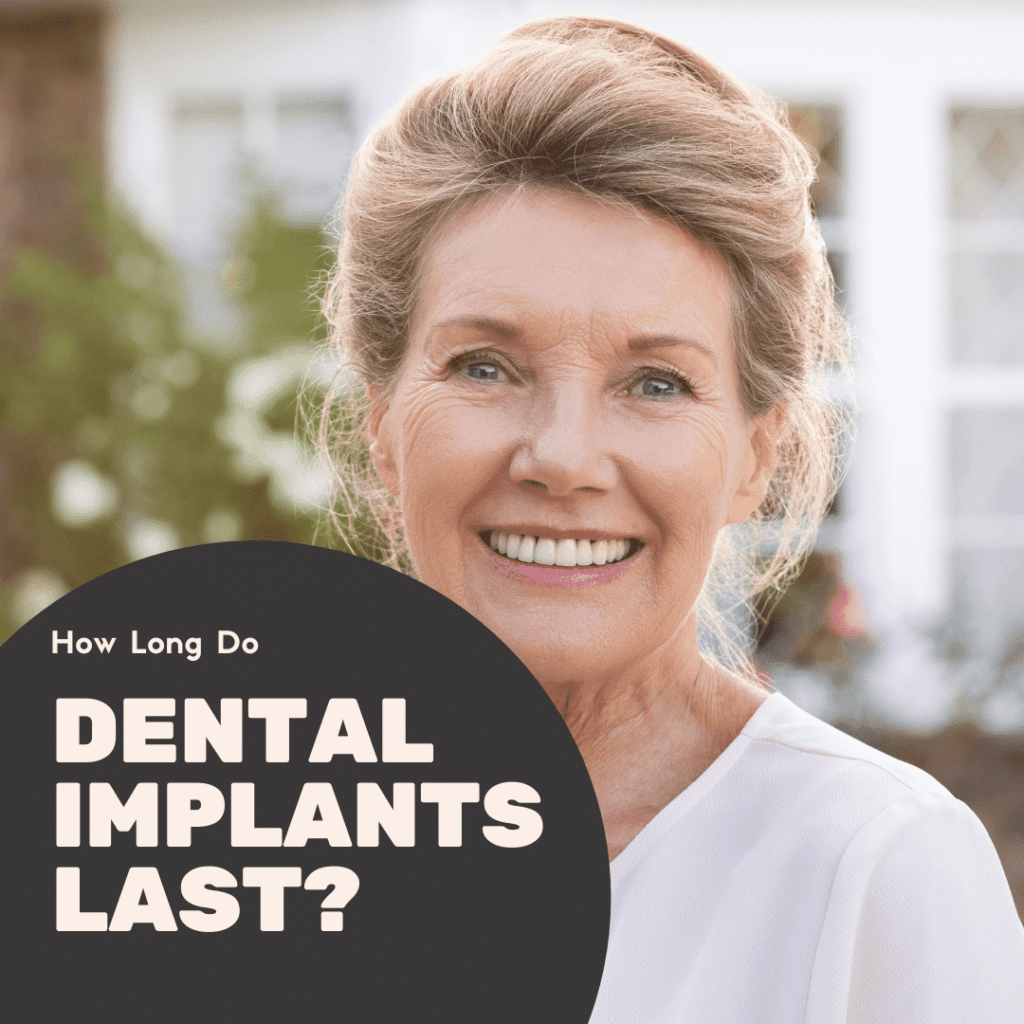Dental implants are becoming increasingly popular as a tooth replacement option for missing teeth. They are valued for their ability to preserve the jawbone while also providing an aesthetic and functional tooth replacement option. They have also been touted as being one of the longest-lasting dental restorations. This raises the question: how long do dental implants last?

To answer this question, we must first evaluate the structure of a dental implant. This is because dental implants are actually composed of three different pieces, each of which can affect its overall lifespan. At a glance, implants are composed of the implant screw, abutment, and dental restoration. The implant screw is the piece that is placed in the jawbone and that eventually fuses with the surrounding bone. The abutment is a metal connector piece that screws into the implant screw on one end and supports the dental restoration on the other end. The dental restoration, of course, is the visible portion of the dental implant made to look like a natural tooth. Depending on the number of missing teeth, the dental restoration can be a crown, bridge, or denture.
In evaluating the structure of a dental implant, it becomes apparent that there are different pieces. Thus, the lifespan of a dental implant is determined by looking at the lifespans of these different pieces. Each piece can vary in how long it lasts because of where it is located. For example, the implant screw tends to last the longest because it resides under the gum line and is fused with the surrounding bone. The abutment also tends to last longer since it is concealed below the restoration. The restoration, however, tends to need replacement sooner because it is the piece that is regularly exposed to the greatest amount of damaging force.
The simple answer for how long a dental implant lasts is that the implant screw generally lasts about 25 years, maybe more, while the attached restoration lasts about 10-15 years. However, these numbers depend on a number of factors, including:
- Type of Restoration: a single implant-supported dental crown absorbs less force as compared to an implant-supported denture, which means that the crown will likely last longer than the denture.
- Location: implant-supported crowns or bridges located in the front of the mouth undergo less chewing force than those located in the back of the mouth. Therefore, restorations in the front of the mouth tend to last longer than those in the back of the mouth.
- Dental Materials: certain dental materials are more resistant to damage and can be stronger overall. Restorations made with these materials may last longer.
- Oral Hygiene: a lack of proper oral hygiene can increase the risk of gum disease. Severe gum disease can infect the gums and the jawbone. This can lead to jawbone deterioration and implant failure.
- Oral Habits: bruxers who regularly grind or clench their teeth generally wear down their restorations faster. Restorations are also more likely to become damaged. In both cases, they usually require replacement sooner.

Dr. Admar holds dual certificates — a Bachelor of Dental Surgery (BDS) in 2010 from India and a Doctor of Dental Surgery (DDS) in 2014 from Canada. He is now a full time practicing dentist in Kamloops where he provides a variety of services, including emergency dentistry. Dr. Admar spends hundreds of hours in continued dental education to stay up to date in cosmetic and implant dentistry and he has achieved several advanced qualifications.


